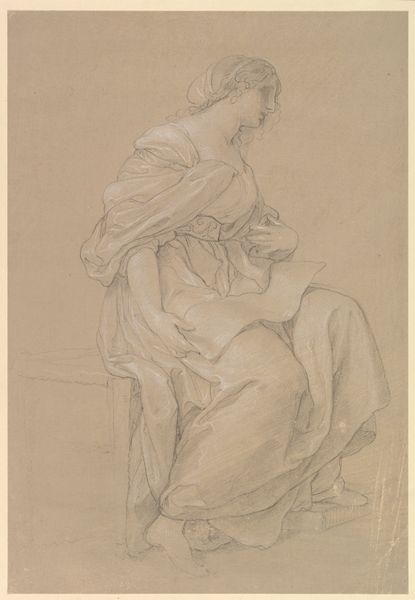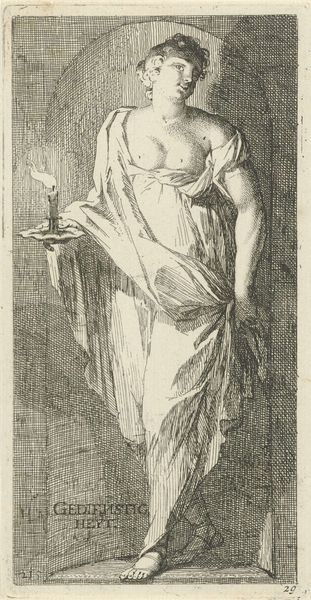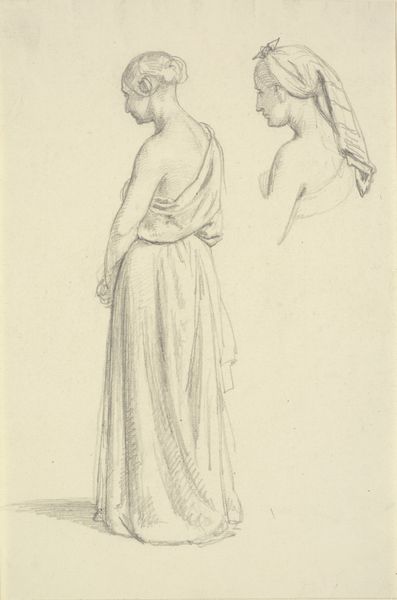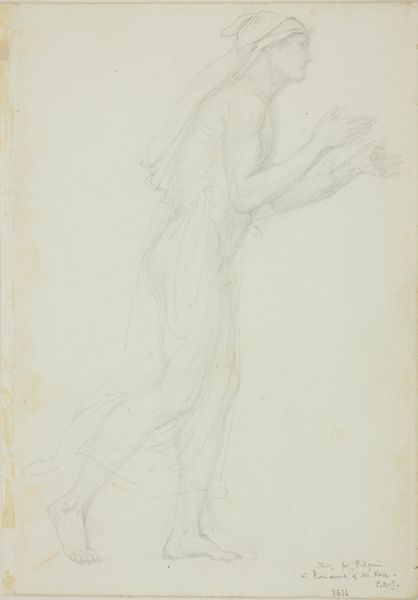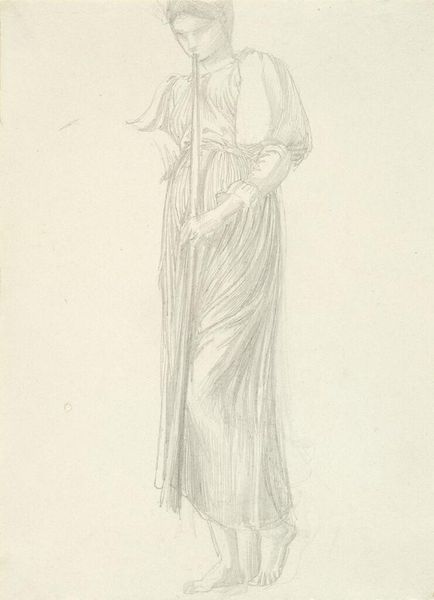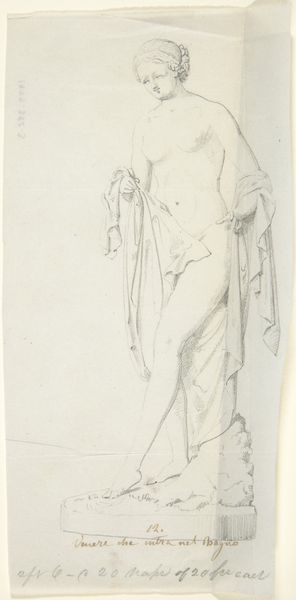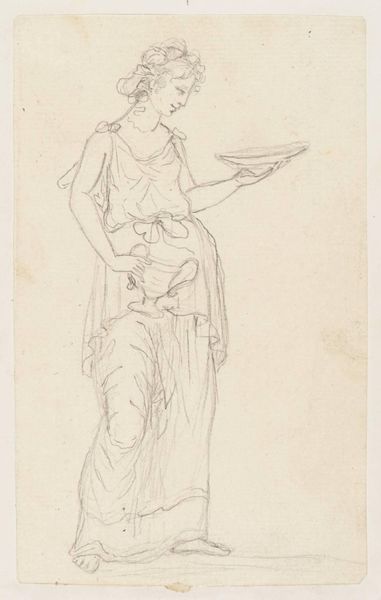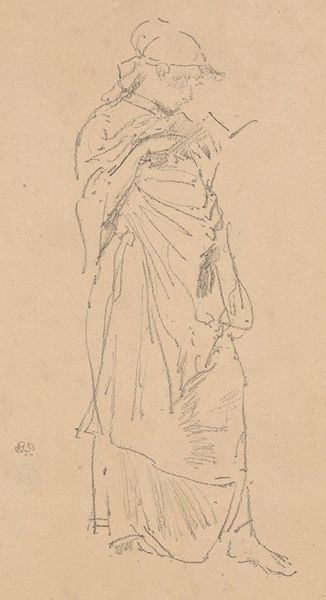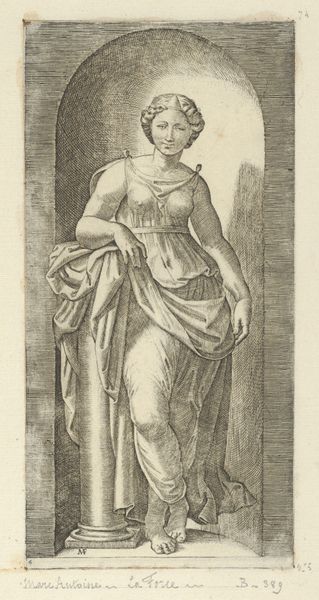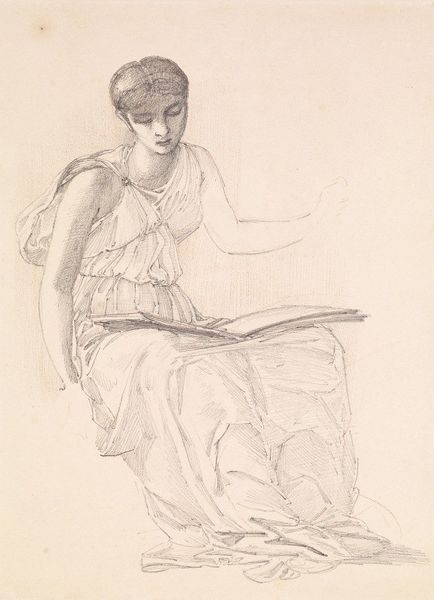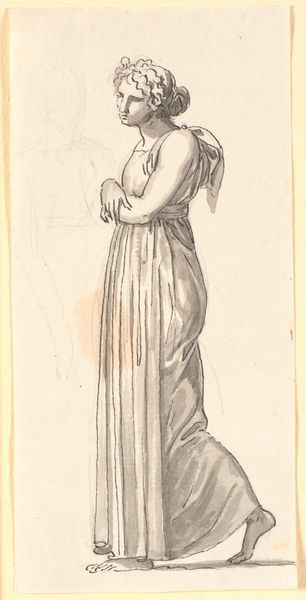
drawing, print, paper, dry-media, pencil
#
portrait
#
drawing
# print
#
etching
#
figuration
#
paper
#
dry-media
#
pencil drawing
#
pencil
#
pre-raphaelites
#
academic-art
Dimensions: 402 × 288 mm
Copyright: Public Domain
Curator: This is Edward Burne-Jones's pencil drawing, "Study for One of the Fates," created around 1865, currently residing at The Art Institute of Chicago. It’s an excellent example of his early pre-Raphaelite leanings. Editor: Well, immediately, what strikes me is this profound sense of... quietude. There's something very still about her, like she's paused mid-thought, contemplating the end of the world, or maybe just what to have for tea. Curator: The choice of subject supports that. In Greek mythology, the Fates controlled the thread of life, determining its beginning, length, and end. So, her pensive gaze might very well be weighing the balance of destinies. Burne-Jones returned to this theme in later works with other materials. Editor: The line work, it’s delicate but firm. It reminds me of early photography; a ghostly presence emerging. See the soft hatching across her gown and how it falls. It feels unfinished and fleeting, which only intensifies the feeling. Curator: Indeed. Burne-Jones was deeply interested in classical themes, reviving them within a Victorian context. His style drew from a range of sources, including the Old Masters and illuminated manuscripts, emphasizing aesthetic beauty and moral allegory, ideals he shared with other members of the pre-Raphaelite brotherhood. Editor: Funny you mention the moral allegory; I suppose that gives this melancholic composition more depth. It could just as easily be a study of an uninspired poet! Her gaze has a touch of world-weariness that's hard to shake. Curator: Well, it’s a fascinating intersection: using classical imagery to represent very contemporary Victorian anxieties around mortality, industry, and societal change. The public role of art at the time included prompting reflection about the human condition. Editor: Looking again, I can really see the influence on artists and movements to come. Perhaps the Symbolists were keen to create equally poignant subjects. It’s curious how Burne-Jones has brought to life a new idea about fate and fatalism. It almost romanticizes the experience of it all, in some small way. Curator: It makes me consider Burne-Jones' place within this grand art historical scheme and, perhaps more interestingly, how he influenced generations of artists navigating a world in constant flux. Editor: Absolutely. This is a tender contemplation, and a visual echo lingering in the corridors of time. It’s an artifact of humanity's strange struggle to coexist with change.
Comments
No comments
Be the first to comment and join the conversation on the ultimate creative platform.

